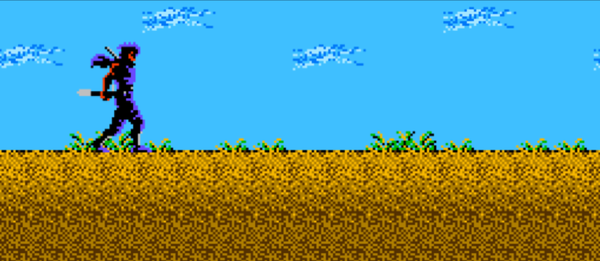
Why Strider for the NES was My Favorite Strider
Feb 25, 2012 // GregaMan
![]() Ah, Strider for the NES. I’ve been raving about this under-appreciated globule of entertainment for literally multiple eons, as well as on our latest podcast (discuss the ‘cast here ). Despite the popular opinion that this is the weakest game in the series’ short run, NES Strider is my favorite Strider of all, and yeah, I’ll just come out and admit that it’s one of my favorite games ever.
Ah, Strider for the NES. I’ve been raving about this under-appreciated globule of entertainment for literally multiple eons, as well as on our latest podcast (discuss the ‘cast here ). Despite the popular opinion that this is the weakest game in the series’ short run, NES Strider is my favorite Strider of all, and yeah, I’ll just come out and admit that it’s one of my favorite games ever.
I will grant that part of that passion is unquestionably due to nostalgia, but after going back to this game again recently, I can confirm that Strider NES is indeed packed with genuinely interesting ideas, and certainly the most complex Strider game if not the “best.”
At the very least, I think we can all agree it trumps the LCD version of the NES game.
As you may know, the NES version of Strider was vastly different from both its arcade and Sega Genesis counterparts, which were themselves rather straightforward, quarter-guzzling action games. And to clarify, I’m certainly not here to knock those games, especially since you can now buy the Genesis version on the Virtual Console, but also because it’s hard to really knock a game in which a cavalcade of senators leap together to form an enormous human centipede, or, if you will, SENATE-PEDE. 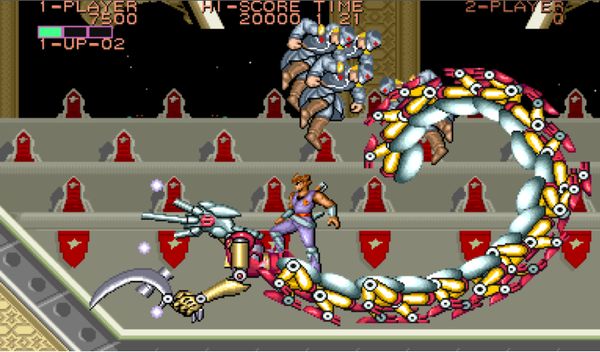
I’m certainly not here to knock that.
I’d just like to assert that, should you have the means, it’s definitely worth giving the NES game a chance. The NES game adhered closely to the simultaneously-released Strider manga, providing a story that was relatively deep for its time, with twists, turns, betrayal, and even “Episode”-introducing splash screens as if it were a weird precursor to Asura’s Wrath.
With the advantage of being a home console game that players could enjoy over an extended period at their own leisure, Strider NES took the slower-paced form of an action-adventure, complete with a password system and even some attractively light elements of nonlinearity.
The game starts out with a rather amazing theme song that sounds like it’s being performed by an orchestra of motorcycles. It leads into a cutscene that has approximately a 7:4 ratio of cool things to sentences, a proportion we long for in today’s explicative dialogue-heavy climate.
Then you get into the thick of it. As your boss briefs you on the enormous communications terminal that is suspiciously reminiscent of the enormous communications terminal from Bionic Commando as well as the enormous stage select terminal from Duck Tales, you learn that Kain, who has only just been introduced a minute ago, has been kidnapped and must therefore be found and killed. Phew, tough crowd.
It is here that you discover the game wears a mask of nonlinearity. From the giant terminal, you are able to choose your destination from a number of nations around the world. Granted, there’s only one destination at any given time that’s worth visiting, but the sheer fact that you are able to select of your own volition somehow makes it feel a lot more like you’re a guy in an actual world, making conscious decisions and business trips and such. Most NES games just pushed you around like controlling significant others. At least this game operated off consent.
To start, you must travel to the bleak, futuristic dystopia of Kazakhstan, a level obviously designed with an abundance of reference material at the creators’ disposal. In a world where data is still being stored on tablecloth-sized Apple IIE floppy disks (more on that to come), why is it that Kazakhstan has things like flying robot men, transformers, and police stations with magnetic walls? I believe the go-to video game explanation of “‘Cuz it’s rad” applies here fully.
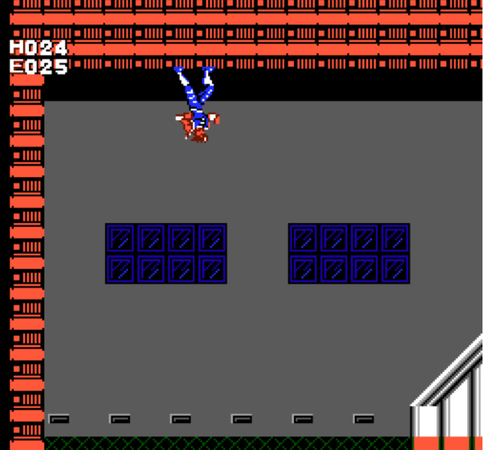
Is this still. . . Kazakhstan??
So but anyway, you find yourself in Kazakh, and it’s lightninging out like crazy. No rain–only lightning, which is to signify that a storm’s a-brewin’. Foreshadowing and symbolism in a NES game? Why yes, you were wrong to scoff at this post.
The Kazakh stage teaches you a number of cool things about this game:
1. Much of the world of Strider can be traversed via a complex system of criss-crossing pneumatic tubes which allow protagonist Hiryu to zip around at high speeds, taking right-angle turns without even slowing down. 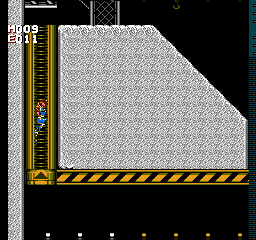
2. If you are skilled, you can perform the Strider’s patented “triangle jump,” bouncing vertically from wall to wall indefinitely.
3. Unlike any other Strider game, in this one you can level up, gain new skills permanently, and even use exhaustible ninja magic. Though Hiryu begins his adventure as a humble, run-of-the-mill future-ninja capable of little beyond swinging a sword and bouncing off walls, he gradually evolves into someone capable of walking on water, generating flames from the fingertips, and shattering the oppressive powers that be.
Your reward for traversing the perilous streets and corrupt law enforcement system of Kazakh is a new slide move, a level up, and two of the aforementioned floppy disks. These disks can be analyzed back on your two-headed space dragon ship for clues as to where you need to go next. It seems that our hero is something of a detective, on top of being a space ninja.
And so progresses the surprisingly deep and intriguing adventure that is Strider for the NES. Certainly not a flawless game, it is nevertheless an under-appreciated one. NES Strider belongs up in the heighty realm of Still Playable Games shared by such titles as Bionic Commando and Mega Man, not at the bottom of some cruddy gutter where all people have to say about it are remarks like “Come on, Capcom, where’s the giant centipede made of men?” and “Poo-haw! This version doesn’t even have nigh-undodgeable volleys of flashing balls!”
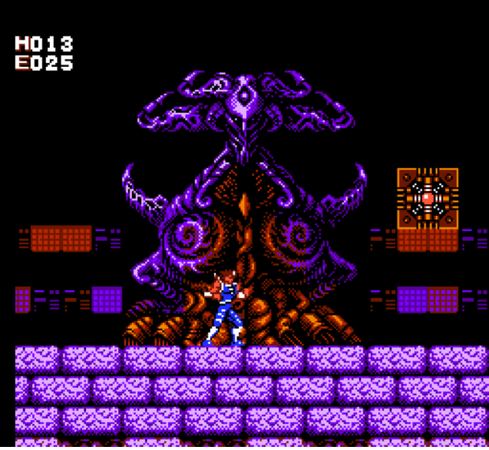
It does, however, have uterus-shaped, mind-controlling trees of death.
P.S. Oh yeah! You can also find this game on the Capcom Classics Mini Mix for the Gameboy Advance, which, as it happens, also contains Bionic Commando. Do it.
-
Brands:Tags:
-

Loading...
Platforms:

